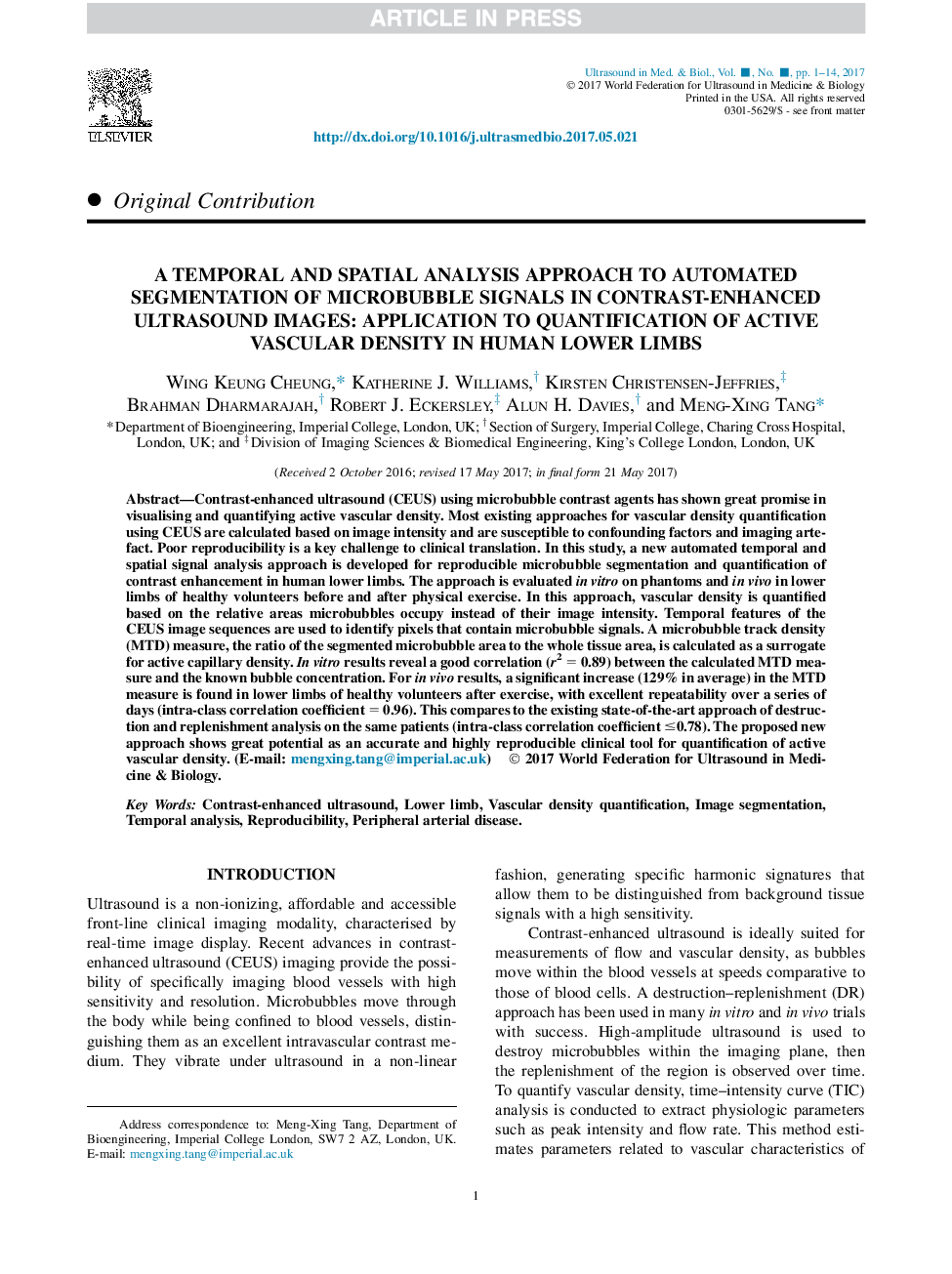| کد مقاله | کد نشریه | سال انتشار | مقاله انگلیسی | نسخه تمام متن |
|---|---|---|---|---|
| 5485559 | 1399433 | 2017 | 14 صفحه PDF | دانلود رایگان |
عنوان انگلیسی مقاله ISI
A Temporal and Spatial Analysis Approach to Automated Segmentation of Microbubble Signals in Contrast-Enhanced Ultrasound Images: Application to Quantification of Active Vascular Density in Human Lower Limbs
ترجمه فارسی عنوان
یک رویکرد زمانبندی و فضایی برای جداسازی اتوماتیک سیگنال های میکروببولت در تصاویر سونوگرافی پیشرفته کنتراست: کاربرد در اندازه گیری تراکم عروقی فعال در اندام های پایین بدن
دانلود مقاله + سفارش ترجمه
دانلود مقاله ISI انگلیسی
رایگان برای ایرانیان
کلمات کلیدی
سونوگرافی با افزایش کنتراست، اندام تحتانی، اندازه گیری تراکم عروقی، تقسیم بندی تصویر، تجزیه و تحلیل موقتی، تکرارپذیری، بیماری شریانی محیطی،
موضوعات مرتبط
مهندسی و علوم پایه
فیزیک و نجوم
آکوستیک و فرا صوت
چکیده انگلیسی
Contrast-enhanced ultrasound (CEUS) using microbubble contrast agents has shown great promise in visualising and quantifying active vascular density. Most existing approaches for vascular density quantification using CEUS are calculated based on image intensity and are susceptible to confounding factors and imaging artefact. Poor reproducibility is a key challenge to clinical translation. In this study, a new automated temporal and spatial signal analysis approach is developed for reproducible microbubble segmentation and quantification of contrast enhancement in human lower limbs. The approach is evaluated in vitro on phantoms and in vivo in lower limbs of healthy volunteers before and after physical exercise. In this approach, vascular density is quantified based on the relative areas microbubbles occupy instead of their image intensity. Temporal features of the CEUS image sequences are used to identify pixels that contain microbubble signals. A microbubble track density (MTD) measure, the ratio of the segmented microbubble area to the whole tissue area, is calculated as a surrogate for active capillary density. In vitro results reveal a good correlation (r2 = 0.89) between the calculated MTD measure and the known bubble concentration. For in vivo results, a significant increase (129% in average) in the MTD measure is found in lower limbs of healthy volunteers after exercise, with excellent repeatability over a series of days (intra-class correlation coefficient = 0.96). This compares to the existing state-of-the-art approach of destruction and replenishment analysis on the same patients (intra-class correlation coefficient â¤0.78). The proposed new approach shows great potential as an accurate and highly reproducible clinical tool for quantification of active vascular density.
ناشر
Database: Elsevier - ScienceDirect (ساینس دایرکت)
Journal: Ultrasound in Medicine & Biology - Volume 43, Issue 10, October 2017, Pages 2221-2234
Journal: Ultrasound in Medicine & Biology - Volume 43, Issue 10, October 2017, Pages 2221-2234
نویسندگان
Wing Keung Cheung, Katherine J. Williams, Kirsten Christensen-Jeffries, Brahman Dharmarajah, Robert J. Eckersley, Alun H. Davies, Meng-Xing Tang,
